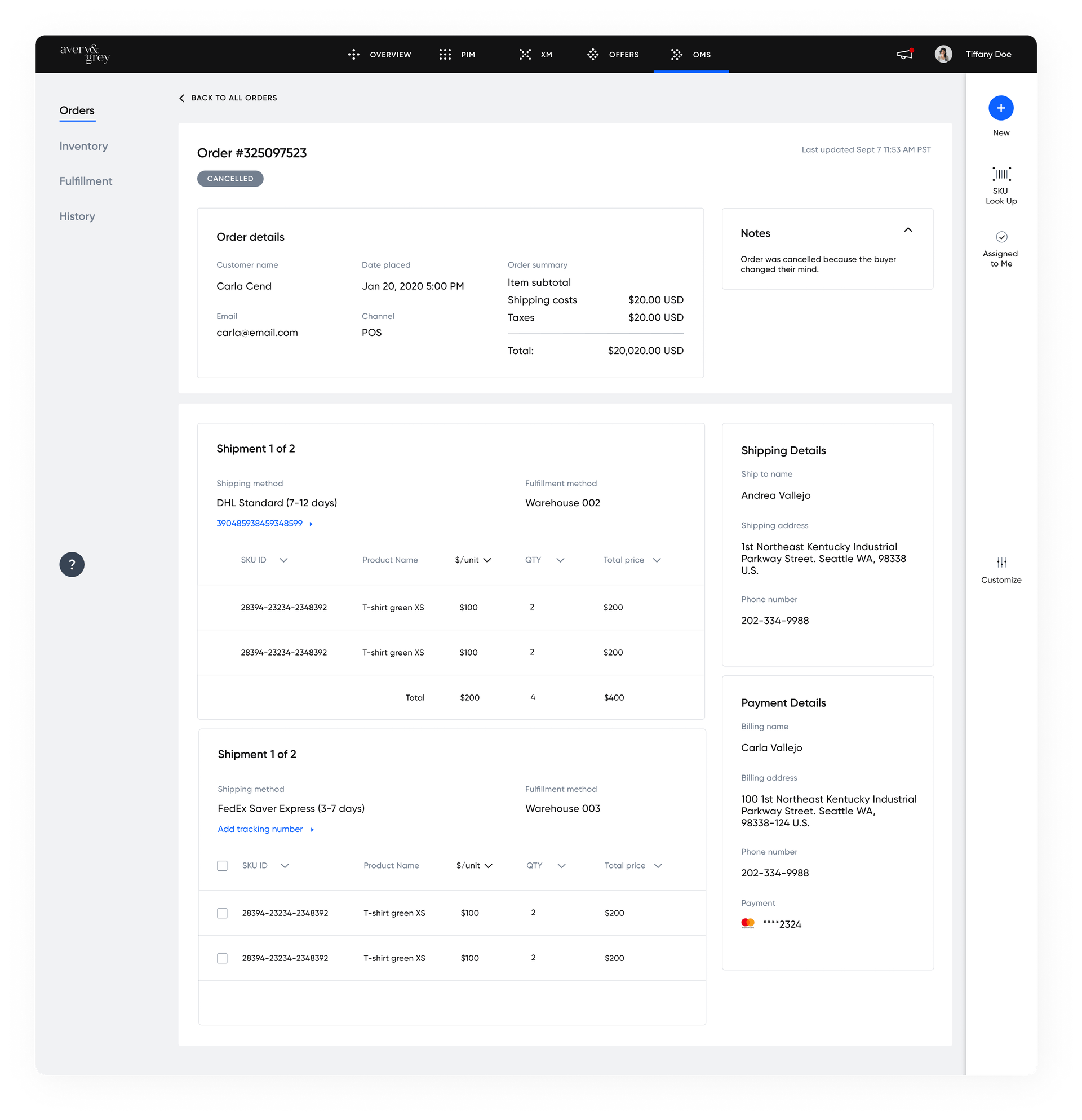What Is Oracle OMS and Its Alternatives?

Oracle’s order management system (OMS) is a part of the commerce and e-commerce platform, Oracle ATG. Oracle OMS helps users streamline their order management process through order visibility, analytics, and a variety of fulfillment options. Oracle acquired ATG in 2011, and while it may have been a leader in its time, it is often treated as legacy technology these days.
Nonetheless, many enterprise-level businesses still rely on the decade old technology today. Meanwhile, both traditional and more modern alternatives to the Oracle OMS have risen in popularity. The most cutting-edge technologies replacing traditional platforms all use headless architecture. With headless commerce’s $1.6 billion in funding in the last two years, it’s worth looking into why so many leaders think it’s the future.
[toc-embed headline=”Oracle OMS Features”]
Oracle OMS Features
Advantages of Oracle OMS
As a well-established OMS platform, Oracle OMS has a well-developed feature set. It also integrates well with other Oracle systems, so it can be a good choice for businesses that already rely on Oracle’s other applications.
Oracle OMS has all the advantages of any established OMS. It can help efficiently manage both purchase and sales orders. The analytics it provides can help catch inefficiencies in your fulfillment process, and its inventory management insights can help prevent stocks from getting too low. Plus, the longevity of Oracle OMS means that it has a well-developed feature set. According to an IT senior manager’s review, Oracle OMS covers 70-80% of the user’s order management processes.
Because this OMS is an Oracle system, it also integrates well with the rest of Oracle’s tech stack. That means if your sales team is using Oracle CRM, it’ll be easier to transfer the information into your OMS and ERP platforms. Because Oracle has such a large number of enterprise applications, this can be a significant plus for businesses whose tech stack is already invested in Oracle.
Oracle OMS disadvantages
Some of the unique advantages of Oracle OMS can also create disadvantages. Its legacy system architecture and the fact that it’s part of an older, monolithic system mean that those using Oracle OMS run into difficulties not found in other platforms.
The history of Oracle OMS means that it isn’t always a user-friendly and intuitive experience. Some functionality is accessible through a command line interface called EMCTL, so if users aren’t used to typing language like emctl status oms to interact with an OMS database, they may have trouble adjusting to Oracle OMS. The user interface available in Oracle OMS can be unintuitive as well, as you can see from the image below.
Because Oracle OMS is built to integrate with Oracle systems, some users have trouble fitting Oracle OMS into their non-Oracle tech stack. Its integrations can be clunky, especially because it isn’t built for a cloud-based, modular system like more modern architecture is.
[toc-embed headline=”Alternatives to Oracle OMS”]
Alternatives to Oracle OMS
There are plenty of alternatives to Oracle OMS, both from the same generation and from the more modern, headless commerce explosion. Comparing the traditional and modern alternatives can help illustrate everything Oracle OMS does well, and what it could improve on.
Traditional OMS alternatives
- IBM Websphere Commerce is one of the oldest enterprise e-commerce solutions out there (second to Oracle). It was purchased more recently, in 2019, but remains a legacy, Java-based platform like Oracle.
- SAP Hybris is over 25 years old now, which has created significant technical debt for its users. Like Websphere and Oracle, it’s a monolithic, Java-based platform that lacks the flexibility of modern architecture.
- Demandware represented a step forward from on-premises systems like Hybris and Websphere. Still, many of its customers are moving on to microservices-based commerce after being unsatisfied with its gaps in speed and security.
- Oracle Siebel is a different product from Oracle’s main OMS platform. However, its order management has many of the same pros and cons as its more popular cousin.
Modern alternatives to Oracle OMS
- Shopify looked like it would dominate the industry in the early 2010s. However, it has plateaued in recent years due to a lack of support for more modern architecture. Although it allows more flexibility than legacy systems, it still doesn’t support the microservices model that’s leading the industry today.
- BigCommerce has a headless architecture that allows the flexibility and customization that modern enterprises demand. However, its high costs and centralized architecture put you at the mercy of BigCommerce if it makes central changes.
- fabric OMS gives the security and flexibility you need with its cutting-edge architecture. An intuitive user interface and modern design reduce training costs, and fabric’s microservices architecture lets you customize it to suit your specific needs.
[toc-embed headline=”Key Takeaways”]
Key Takeaways
- Oracle OMS is a legacy order management system that met enterprise needs when it was created but has been outpaced due to its monolithic, rigid architecture.
- Alternatives to Oracle OMS often face the same problems: lack of flexibility, and charging for services and features that don’t meet your needs.
- Legacy Oracle OMS alternatives still lack the modern architecture that users need for efficient, omnichannel order management
- fabric OMS is secure, cost-effective, and modular. Its modern microservices architecture means that you only pay for what you need.

Tech advocate and writer @ fabric.

